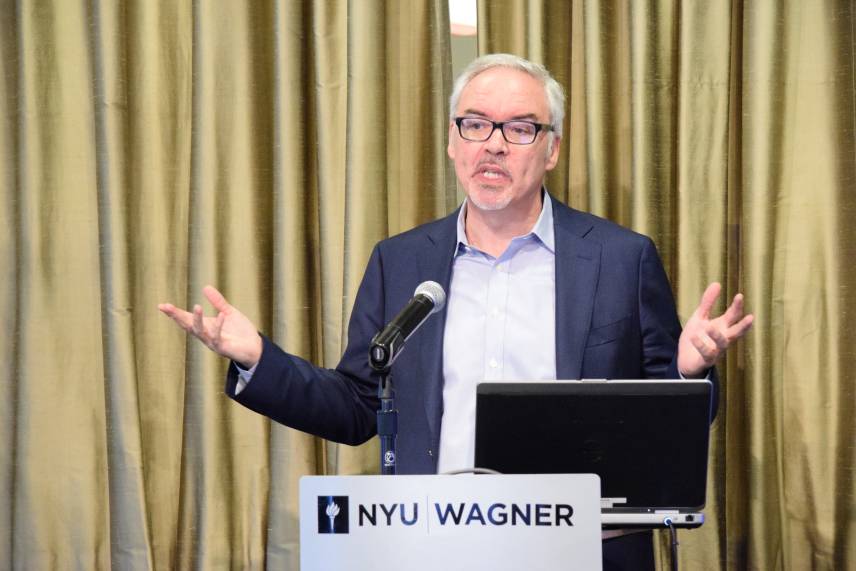Rice Urban Policy Forum Addresses Detroit's Troubled Past and Potential Revival

The 2016 Henry Hart Rice Urban Policy Forum took place on April 27, featuring Thomas Sugrue, Professor of Social and Cultural Analysis and History at the NYU College of Arts and Science. Sugrue spoke about the history of crisis and bankruptcy in Detroit, a city that has garnered recent attention. As an urban historian, Detroit native, and author of the prize-winning book The Origins of the Urban Crisis: Race and Inequality in Postwar Detroit, Sugrue discussed Detroit’s struggles, the limited impact of recent revitalization initiatives, and possibilities for future reinvention.
The much-anticipated annual event drew a crowd of over 100 students, academics, policy makers, and planners. Sugrue was introduced by Mitchell Moss, the Henry Hart Rice Professor of Urban Policy and Planning and the Director of the Rudin Center for Transportation Policy and Management at NYU Wagner. In his welcoming remarks, Moss lightheartedly noted that although New York City lost its status as the nation’s capital to Philadelphia over 200 years ago, NYU recent acquisition of Sugrue as a faculty member “more than made up for that loss.”
Sugrue began his lecture by describing Detroit’s 2013 bankruptcy, an event which only exacerbated conditions in the already beleaguered city. Despite a 25% loss in population from 2000-2010, it was still the largest municipality to file for bankruptcy in United States history. Since its peak in the 1950s, Detroit has hemorrhaged over one million residents, resulting in the proliferation of vacant lots, the eerily rural character of once-populous neighborhoods, and the emptiness within the city’s downtown. This intense depopulation and abandonment has accompanied staggering unemployment rates, which soared above 25% in the aftermath of the 2008 financial crisis.
Although the city no longer has funds to demolish the abandoned residences that dot its landscape, nature seems to be taking over. Once a building loses its roof, Sugrue said as he gestured toward images of ruined mansions, water sets in and the walls collapse.
Sugrue explained that often people attribute Detroit’s decline to its history of racial tensions and the mayoralty of Detroit’s first African-American mayor, Coleman Young. But, he explained, the decline of the city had just as much to do with deindustrialization, aging infrastructure, and improvements in production technology as it did with racial conflict. After serving as the “arsenal of democracy” and the major producer of automobiles in the early 20th century, the ruins of Ford’s Highland Park and River Rouge plants are what remain of Detroit’s former industrial glory.
Sugrue touched on the recent “hipsterification” of downtown, where art spaces, ironic bars, and even a Whole Foods have recently set up shop. The impending completion of a three-mile light rail connecting the downtown and midtown neighborhoods and the proposed Red Wings stadium in the center of the city have also generated hype around Detroit’s revival. Despite this apparent progress, Sugrue cautioned against applauding the isolated and almost superficial effects of these improvements. He instead cited the vibrancy of the hospital and medical sector, the diversity of new immigrants, and Detroit’s status as an international city as signs of a new age to come.
While the woes of Michigan’s queen city are far from over, Sugrue signaled to a potentially brighter future for this once great industrial city.
- Written by Colin Murphy, MUP 2017